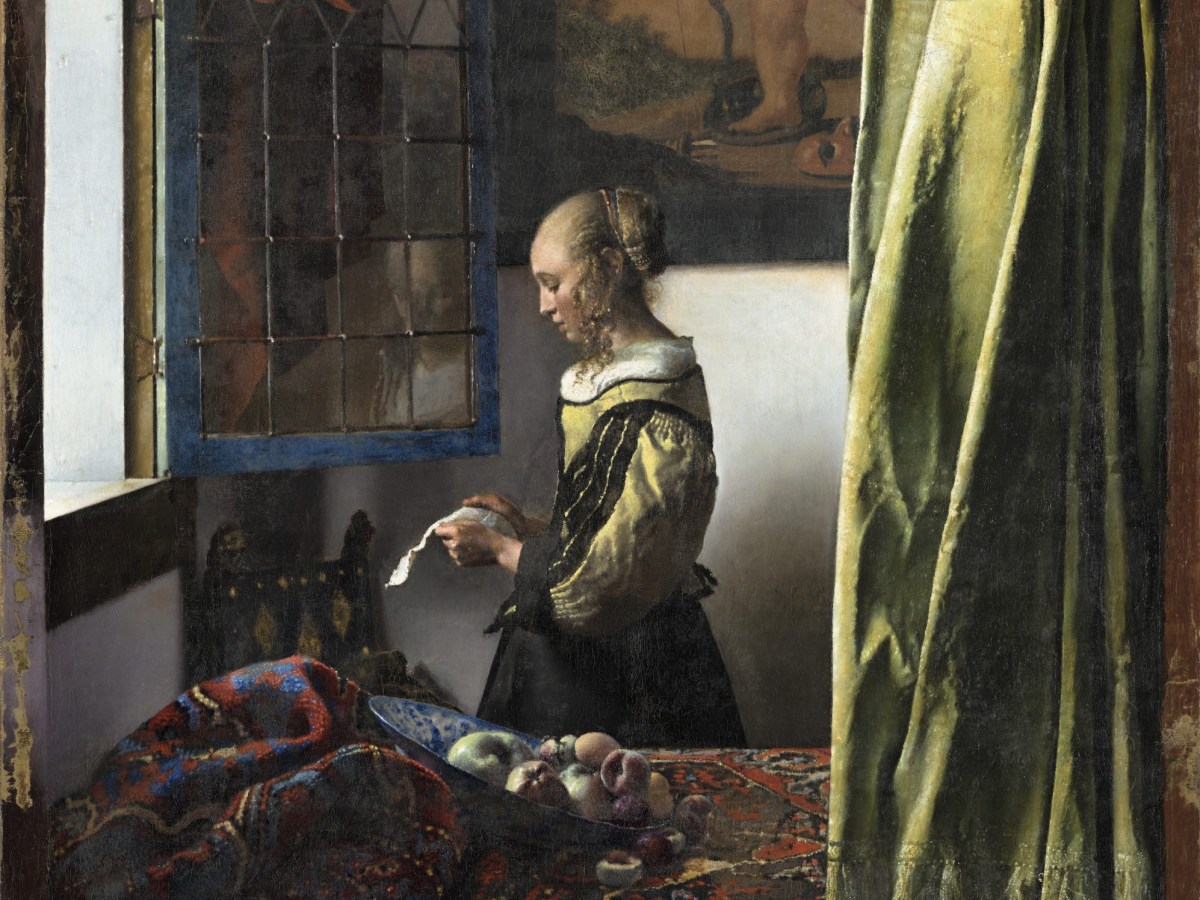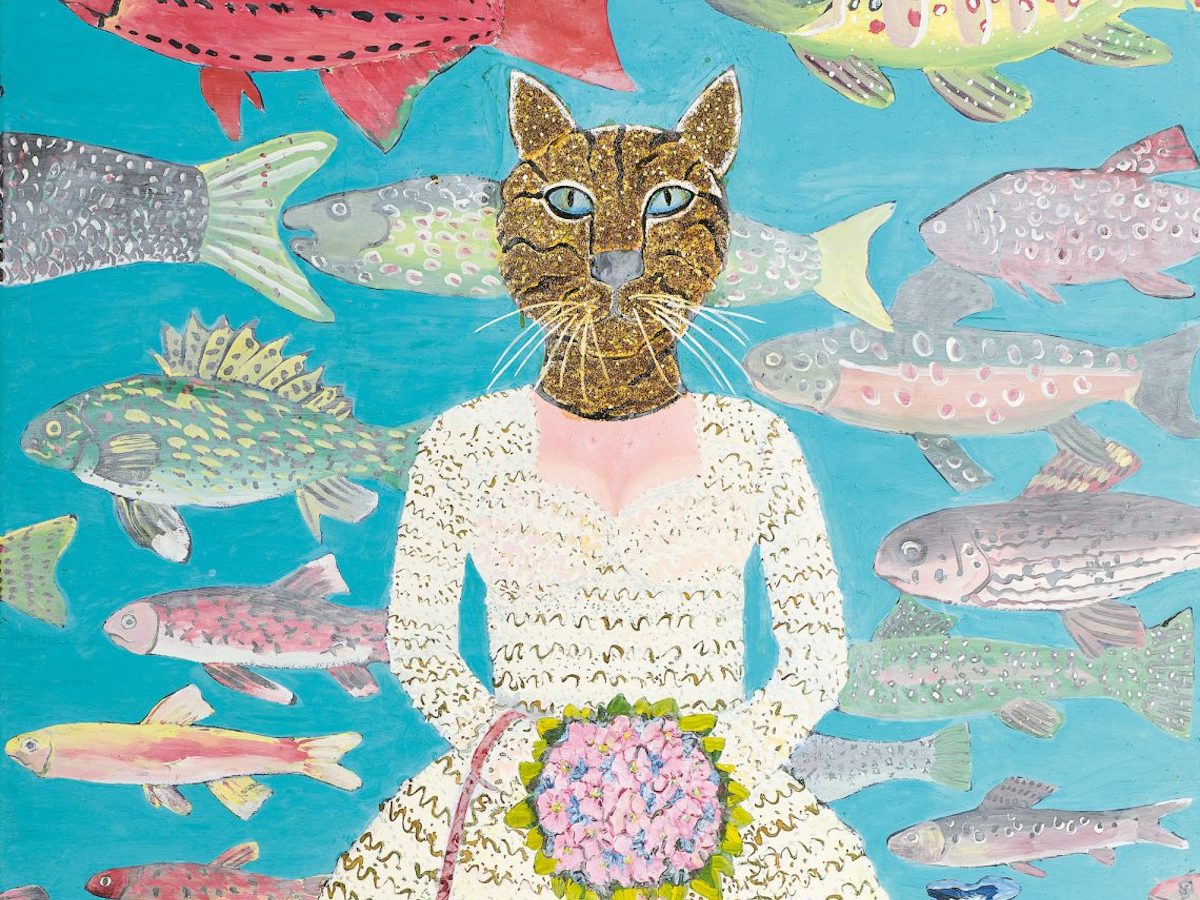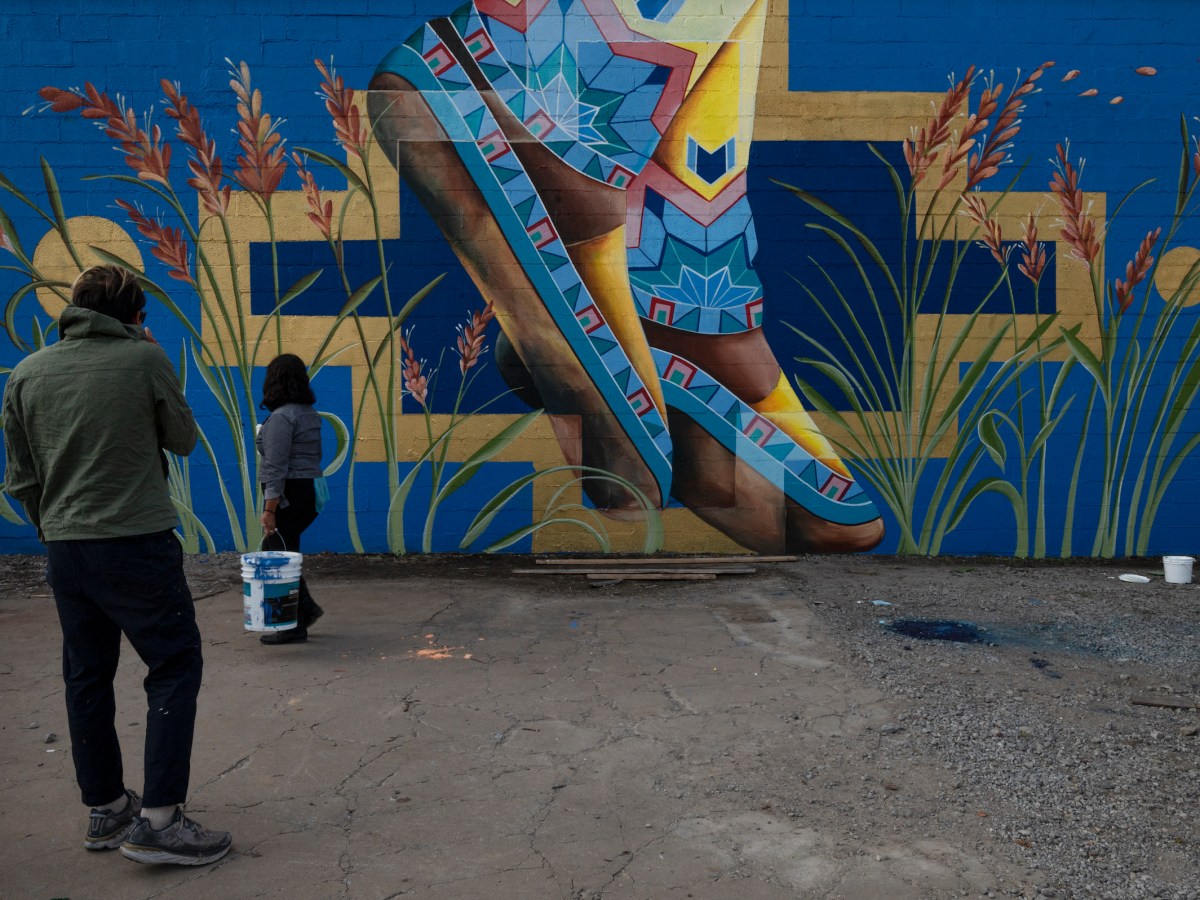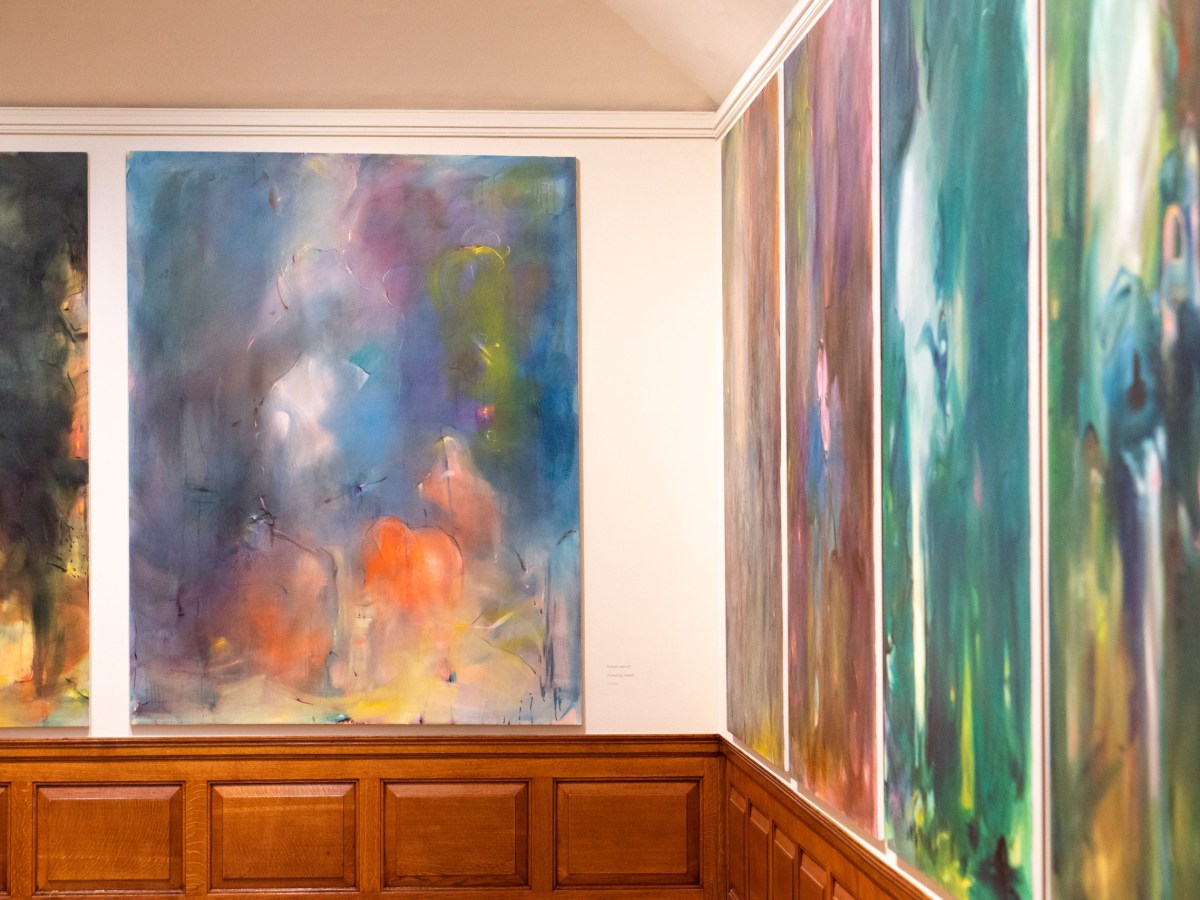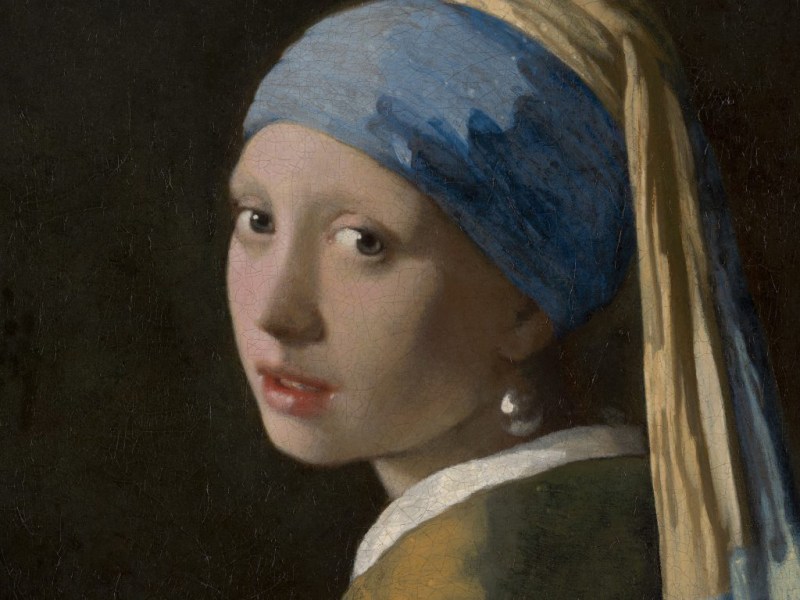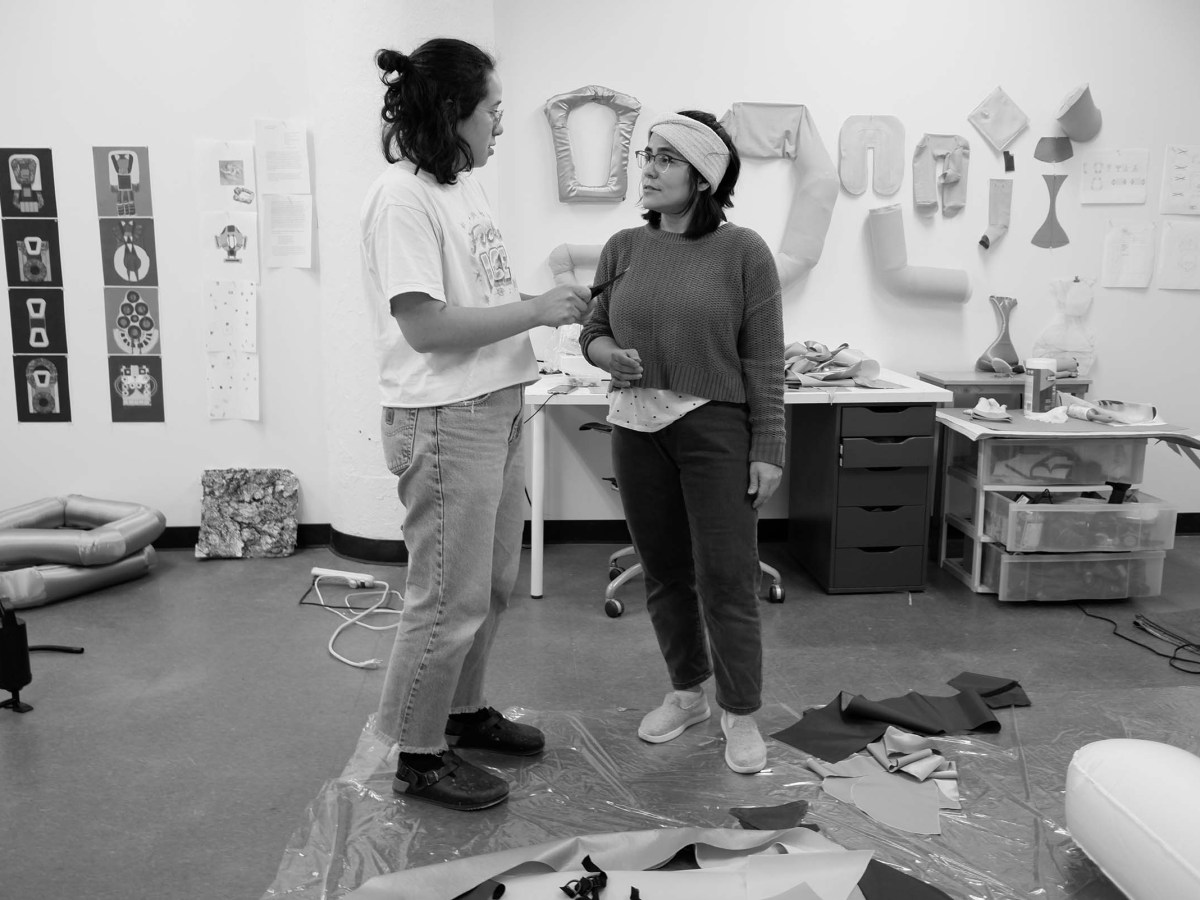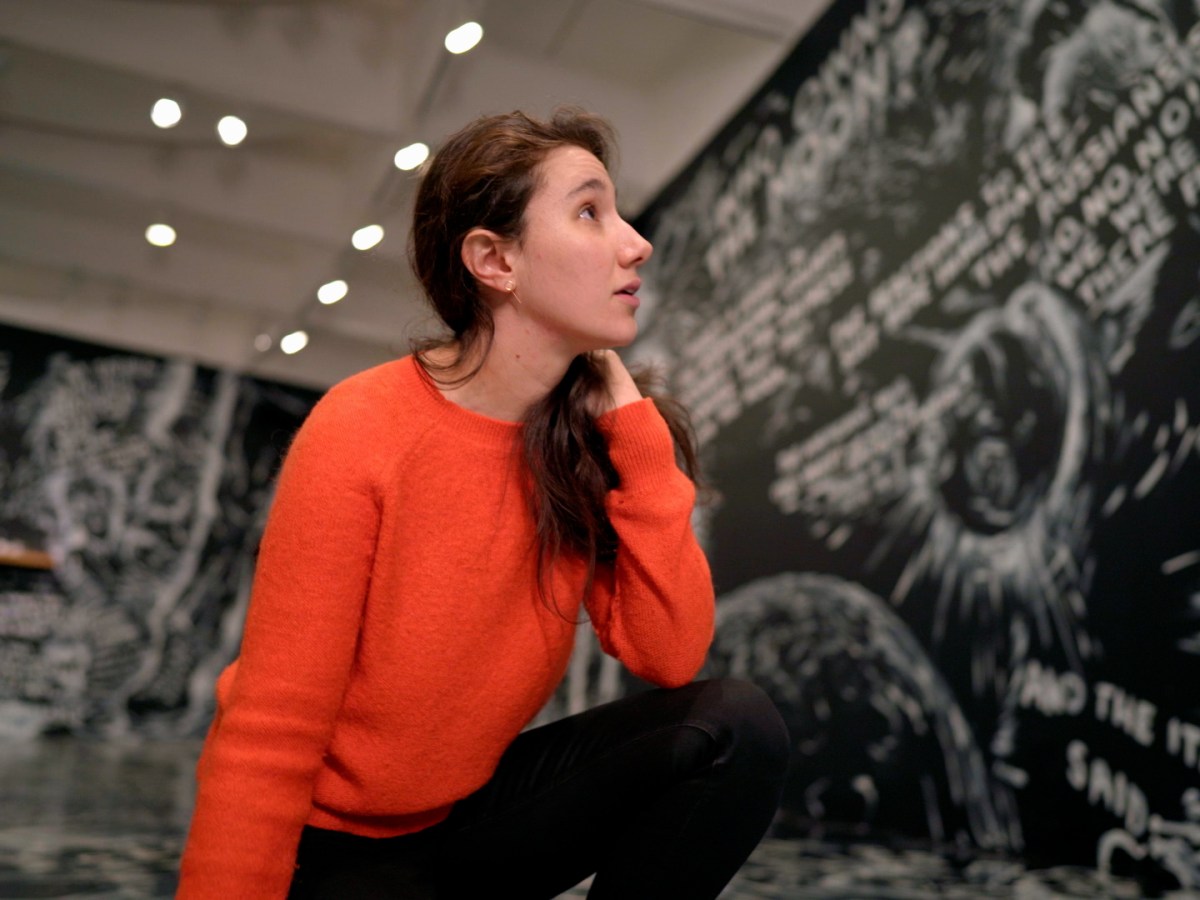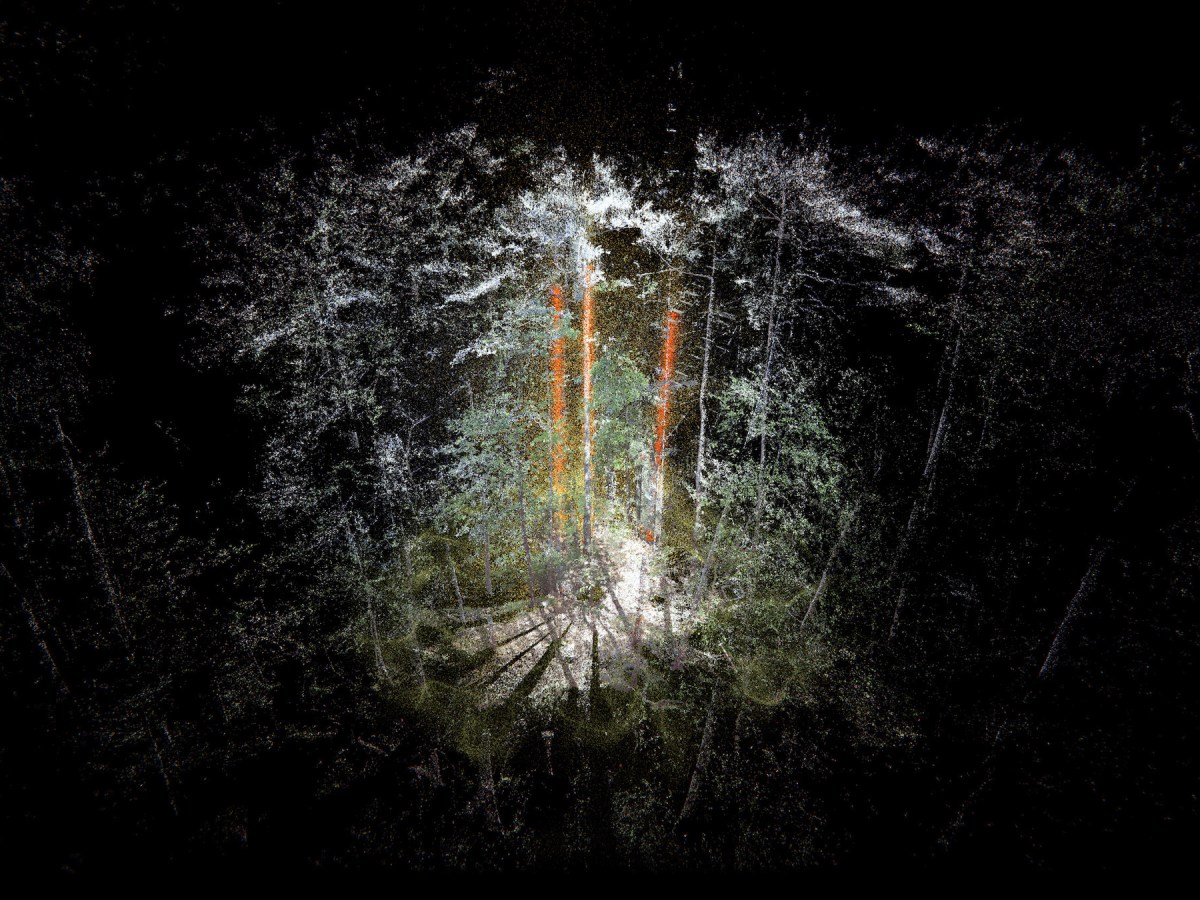Often referred to as tzitzit after the name of the fringes that are attached to its four corners, the tallit katan is a garment traditionally worn by Orthodox Jewish men under their clothes, a constant reminder of their connection to God. In November 2021, Los Angeles-based artists Julie Weitz and Jill Spector launched the Tzitzit Project with the goal of making tzitzit for a wide spectrum of gender identities, body types, and spiritual practices, offering the “opportunity to reclaim the divine in the everyday.”
The roots of the project lie in My Golem (2017–2020), Julie Weitz’s reinterpretation of the sculpted figure that is brought to life to protect the Jews of 16th-century Prague from persecution, according to Jewish folklore. Weitz’s Golem tackles contemporary issues, from rising Fascism and intolerance to ecological collapse. In her 2021 film project Prayer for Burnt Forests, Weitz appears as a firefighting Golem confronting the devastating Southern California wildfires. Her character wears tzitzit, which she co-designed with Spector, a self-taught textile artist. In the video, Weitz removes her tzitzit and wraps it around a burnt tree trunk, as though covering a dead body, in a kind of mourning ritual. In doing so, she came to appreciate how “this garment has real power, it’s not just a costume,” she told Hyperallergic. She began thinking about what it would mean to wear tzitzit outside of a performative context.
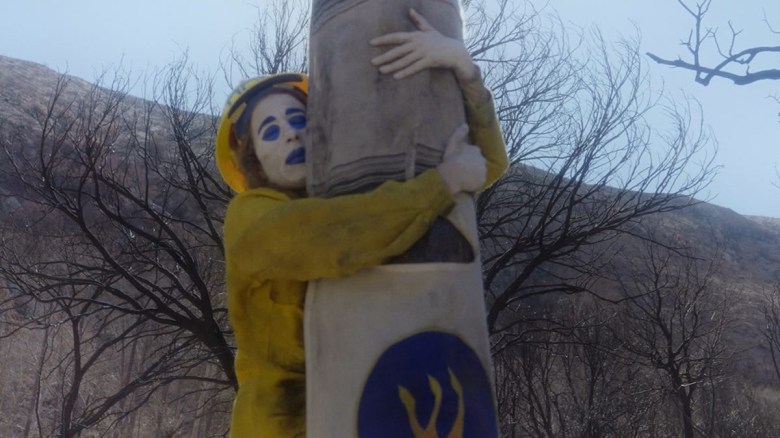
Jewish law does not forbid women from wearing tzitzit; however, the practice has traditionally been reserved for men, and women who don the garment are often subjected to harassment. Given this history, the pair collaborated on a garment for Weitz and came to a realization. “Wow, maybe this isn’t a one-garment thing,” Spector recalls.” If you want to do this, there must be other folks.”
In the summer of 2021, they began conducting a series of interviews and surveys with approximately a dozen women, nonbinary, and trans progressive Jews, asking them how they would want the garment to fit and feel as well as questions about spiritual practices. They then began prototyping, getting feedback from testers before arriving at their final designs. Last fall, Spector and Weitz opened their online shop, offering an inclusive way to fulfill the mitzvah (commandment) of wearing tzitzit.
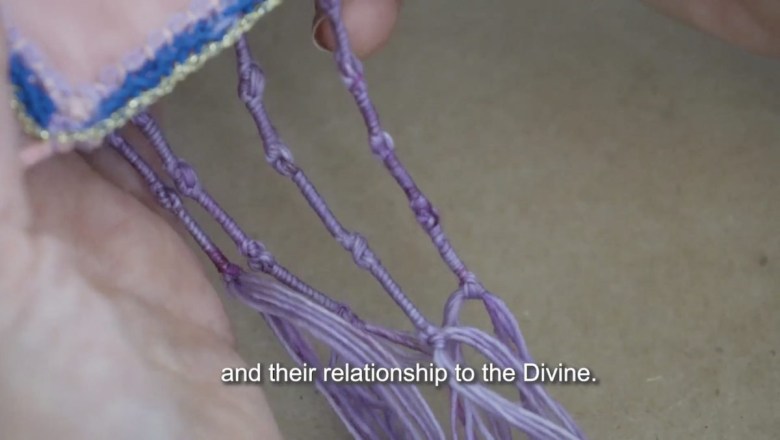
Weitz and Spector were not only concerned with how their tzitzit would feel and look on a variety of bodies, but also with serving the spiritual needs of their community. The fringes that hang from each of the four corners must be twisted a certain number of times before being double-knotted, twisted again, and repeated. For Ashkenazi Jews from Eastern and Central Europe, the pattern of twists is 7-8-11-13, while for Sephardic Jews from Spain and the Mediterranean, the pattern is 10-5-6-5, each with special significance within Hebrew Gematria, the practice of assigning numerical value to letters. Tzitzit Project offers customers both options.
It was also important that their tzitzit were in keeping with Jewish law; namely, that they be kosher. There are various regulations regarding how and from what material tzitzit can be made. The bodies of the garments are made from deadstock nylon mesh at Ari Jogiel, a small fabrication company in downtown LA, with a focus on minimizing their ecological footprint, while the fringes are hand-knotted from Tencel, cotton, or wool. They recite the phrase “l’shem mitzvat tzitzit / for the sake of performing the mitzvah of tzitzit” as they twist and knot the strings. The wool is hand-spun by textile artist Channing Hansen, who also recites a prayer as he works. It is important that the yarn be made for the sole purpose of being part of tzitzit, and Hansen’s hands-on approach means that “from the raw wall to the spun yarn, it’s all done with intention,” he said.
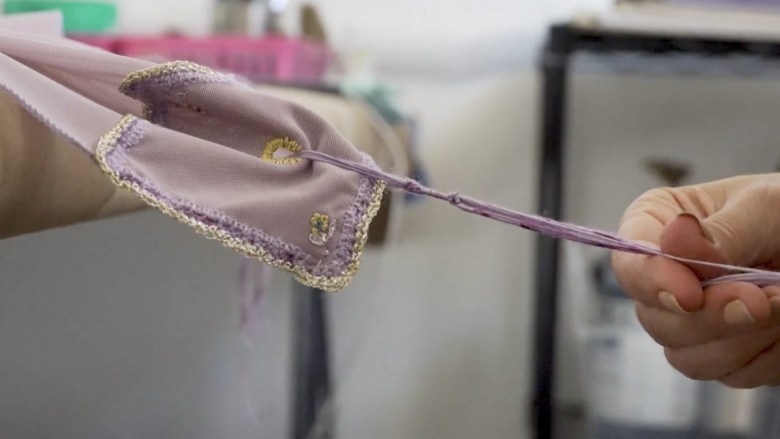
For all three artists, the Tzitzit Project offered a new way to connect with their Jewish roots, merging artistic and spiritual practice. Weitz’s maternal great-grandfather worked as a cutter for a suit company in Chicago, while Spector’s great-grandmother was an “invisible mender” in Łódź, Poland, repairing damaged bolts of fabric by hand. She died in the Łódź Ghetto during the Holocaust. Hansen comes from a line of “anarcho-socialist Jews,” and his great-great-grandfather was union organizer for the Ladies’ Garment Workers in New York. A year ago, he inherited a trove of Judaica books after the death of a relative including volumes on Kabbalah and esoteric Jewish mysticism. He took it as an invitation to explore his own spiritual practice, of which his collaboration with the Tzitzit Project is a part.

As much as it has rekindled their own Jewish identities, the Project has also opened up new ways to express them. “What I’ve learned through this, is there’s such a variety of folks practicing Judaism in different ways, taking on rituals in different ways,” Spector said. “It’s so liberating.”
For Hansen, the sense of continuity with tradition was balanced with a hopeful rupture with the past. “So many people at the fringes are now sitting at the table, deciding what Judaism will look like,” he said. “There’s never been a better time to be a Jew because of all this experimentation.”


